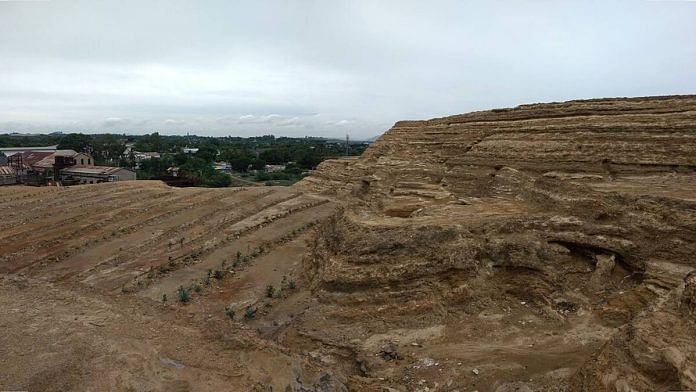New Delhi: Twenty-four years after one of India’s oldest gold mines was shut, the Union Ministry of Mines has set the ball rolling for the auction of nine tailing dumps at Karnataka’s Kolar Gold Fields (KGF), to extract residual gold and other platinum group elements from the leftover ore that was processed there earlier, ThePrint has learnt.
Mill tailing (byproduct of mining) dumps are the heaps of residue left after extraction and processing of ore. Over a period of time, these tailings, which contain residual gold, have turned into the size of hillocks.
The mines ministry has started the auction process and appointed SBI Caps as transactional adviser to firm up the modalities, a senior official from the ministry told ThePrint. But it will be a while before the auctioning process is completed.
“The auction process will take anywhere between one-and-a-half years and two years to get completed,” said the official.
Sources in the mines ministry and the Karnataka government also said that KGF has about 33 million tonnes of mill tailings, occupying over 15 percent of the area, and the estimated worth of minerals in the dumps is Rs 25,000 crore to Rs 30,000 crore.
A 2021 survey by Non-Ferrous Materials Technology Development Centre (NFTDC), a research and development centre under the mines ministry, found that apart from enhanced residual gold content, the tailing dumps also have presence of platinum group elements (PGEs) like rhodium and palladium. The survey also found traces of tungsten.
PGEs are used in many industrial applications like catalytic converters to reduce carbon monoxide, hydrocarbon and nitrous oxide emissions in automobile exhaust, among other things.
Earlier studies by Mineral Exploration and Consultancy Limited and Geological Survey of India found traces of residual gold only in the tailing dumps.
The mines ministry official quoted earlier told ThePrint that approximately 1 gram of residual gold could be extracted from a tonne of processed ore in the tailing dump.
The NFTDC survey, however, said it has been proved that a minimum of 2 gram per tonne of final values are extractable.
“Assuming conservative value of Rs 6,000 per gram for gold and palladium (rhodium is even more expensive), from 30 million tonnes, at least Rs 36,000 crore worth of gold, palladium and rhodium can be extracted by the proposed cyanide free process. If prices of gold and PGE go up, this extractable asset value goes up even further,” the survey report said. ThePrint has seen the report.
It further said the palladium and rhodium that have ended up as mill tailings have added to the asset value. “With gold prices touching Rs 9,000 per gram (for 22 karat), even if we are able to extract 1 gram per tonne, it will be profitable,” said the ministry official.
Though talk of auctioning the tailing dumps had been going on for a long time, it was after the survey that the mines ministry started pushing for auction.
After a lot of back and forth, in June 2024, the Karnataka cabinet cleared the Centre’s proposal to auction the tailing dumps. Though the dumps are on land of Bharat Gold Mines Limited (BGML), a PSU under the mines ministry which owned and operated the KGF, approval from the state is a must before mining starts.
Also Read: Once India’s gold mine, this dejected Karnataka town is only remembered in election season
No plan to revive KGF yet
As of now, there is no plan to revive the KGF though, a second ministry official told ThePrint. “Once the tailing dumps are auctioned and processing of minerals starts, we will take a call on what to do with the KGF. It’s a huge chunk of land and can’t remain unutilised,” the official added.
While the KGF is spread over an area of 12,000 acres, the tailing dumps occupy approximately 1,003 acres.
KGF was started by John Taylor and Sons in 1880. It was nationalised in 1956. BGML was formed in 1972 and took over KGF. It was involved in mining and production of gold in the fields till they were shut down in February 2001, after it became unprofitable to mine gold.
In its heyday, peak gold output at KGF was around 47 gram per tonne of ore. In 2001, when it was shut, production had fallen to less than 3 gram per tonne. Since the start of mining till closure, KGF has produced over 800 tonne of gold per 51 million tonne of ore.
India is the second biggest consumer of gold in the world, making up around 17 percent of total consumption. The country’s average annual domestic demand for gold is over 800 tonnes but it produces very little of it domestically, relying mainly on importing refined gold and gold ore.
(Edited by Nida Fatima Siddiqui)
Also Read: How experiments at Karnataka’s Kolar Gold Fields are last remaining piece of India’s neutrino legacy






